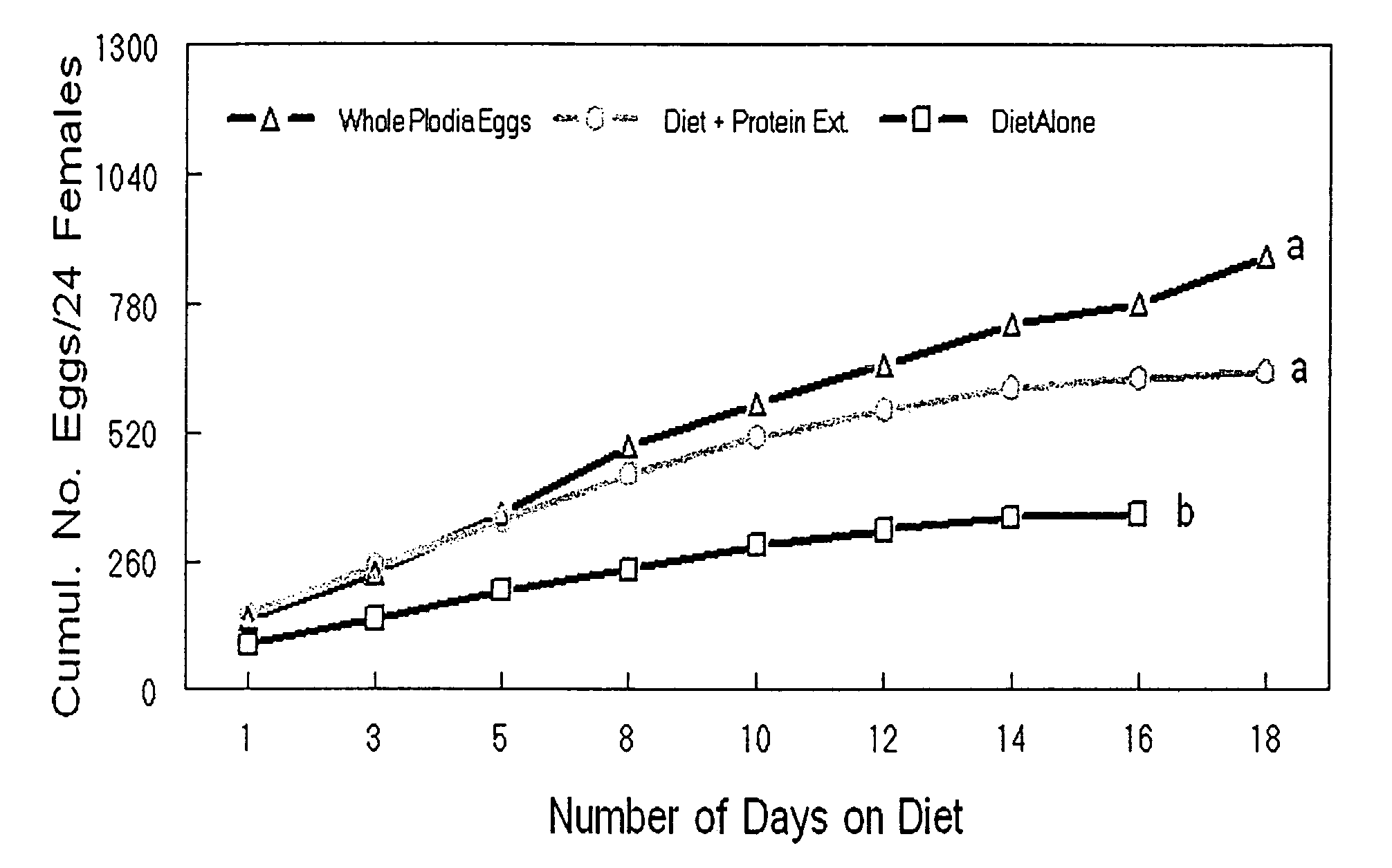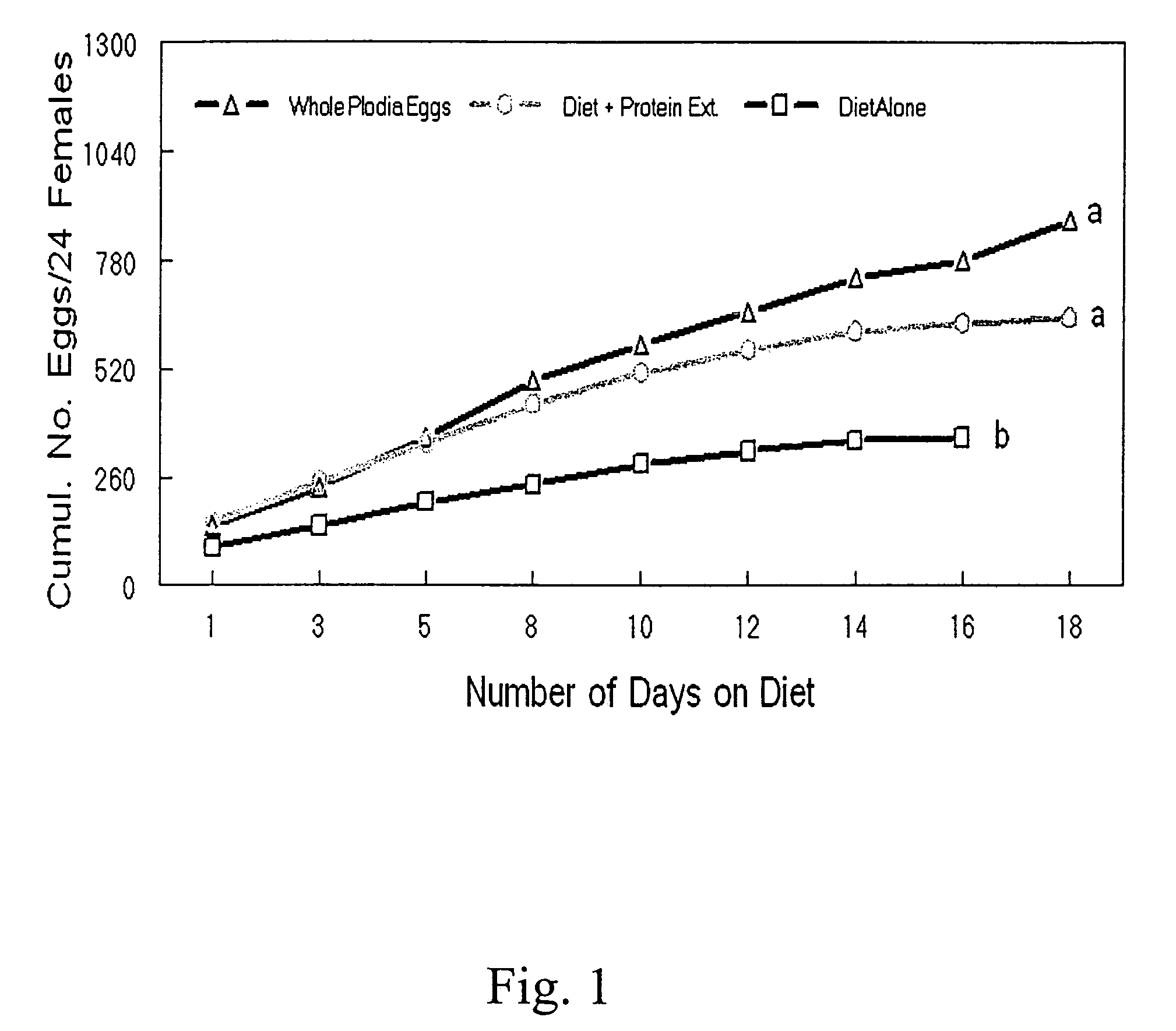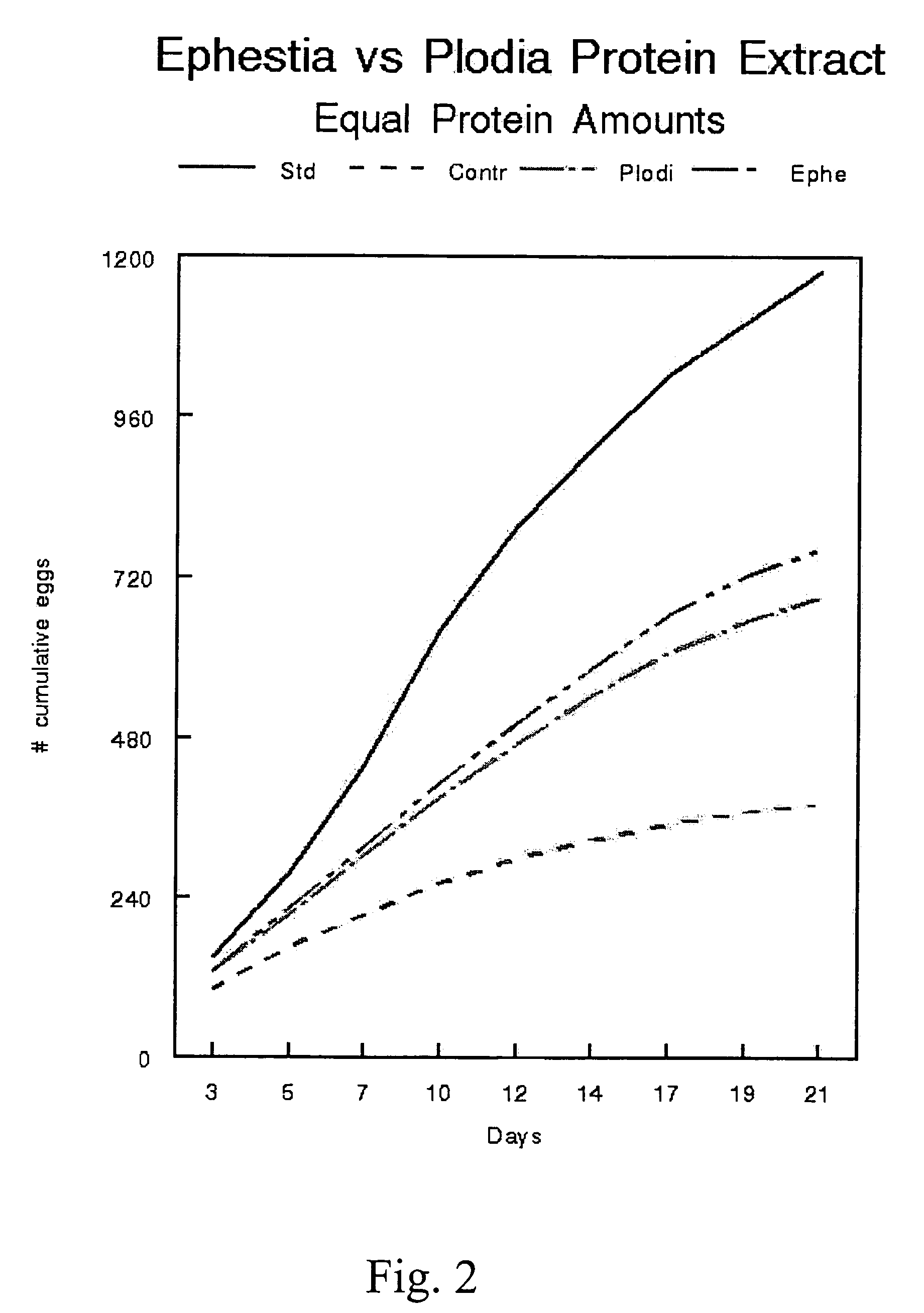Fecundity-promoting supplement for the insidious flower bug reared on artificial diet
- Summary
- Abstract
- Description
- Claims
- Application Information
AI Technical Summary
Benefits of technology
Problems solved by technology
Method used
Image
Examples
example 1
[0046]Newly emerged adults of Orius insidiosus (Plodia egg (standard) jars each contained approximately 75 Ploida interpunctella eggs (approximately 3 mg) in place of diet. Although eggs from Euphestia kuehniella are generally used by commercial producers, eggs from P. interpunctella were used because O. insidiosus feeds readily on their eggs. Green beans were removed every other day and examined under a microscope to count eggs and then replaced with a fresh green bean section and mortality was also recorded within each jar. Plodia eggs and domes of water and diet were replaced on the same days that the green beans were removed for counting eggs. The insects were held in a growth chamber at about 25.50±1° C., with approximately 75±5% relative humidity, and a photoperiod of 15:9 (light:dark) hours. The experiments were carried out until the females in all treatments ceased oviposition, approximately 28 days. Diets were prepared under aseptic conditions in a clean room and encapsulat...
example 2
[0060]Ephestia kuehniella eggs are generally used by insectaries to rear Orius species and egg production was about 25% higher in females fed on Ephestia eggs compared with those fed on Plodia eggs. However, FIG. 2 demonstrates that Ephestia kuchniella egg protein extract, prepared as described for Plodia interpunctella extract in Example 1, yielded egg production from Orius similar to those fed Plodia extract. The freeze-dried protein powder (approximately 480 mg) from five grams of Ephestia eggs was dissolved in about 33 ml of electrolyte buffer and the protein extracted was focused in an isoelectric gradient of about pH 4-10. After the voltage stabilized, the gradient of focused protein was separated into 20 fractions of approximately 2 ml each and the pH of each measured. The fractions were then brought to 1 M NaCl and then dialyzed against physiological saline to remove ampholytes. The protein concentration of each fraction was measured and the fractions were combined based on ...
example 3
[0062]Whole cells derived from embryos of Plodia interpunctella were homogenized and added to control diet. Adding Plodia cell homogenate directly to the artificial diet at concentrations of approximately 35, 75, and 142 μg protein / ml diet showed an increase in cumulative number of eggs per female when compared to the control artificial diet. An embryonic cell line derived from the Plodia interpunctella embryos were grown at intermediate levels in spinner flasks. To determine whether the Plodia insect cell line may contain activity, cells were separated from culture medium by centrifugation and washed 2× with physiological saline, homogenized and then directly applied to the same isoelectric focusing gradient used for the Ephestia egg protein extract. Approximately 1.0 ml of each of the final fractions was added to the basal artificial diet. The number of eggs laid by females reared on the control diet and experimental diets were also compared as a percentage of the number of eggs l...
PUM
 Login to View More
Login to View More Abstract
Description
Claims
Application Information
 Login to View More
Login to View More - R&D
- Intellectual Property
- Life Sciences
- Materials
- Tech Scout
- Unparalleled Data Quality
- Higher Quality Content
- 60% Fewer Hallucinations
Browse by: Latest US Patents, China's latest patents, Technical Efficacy Thesaurus, Application Domain, Technology Topic, Popular Technical Reports.
© 2025 PatSnap. All rights reserved.Legal|Privacy policy|Modern Slavery Act Transparency Statement|Sitemap|About US| Contact US: help@patsnap.com



